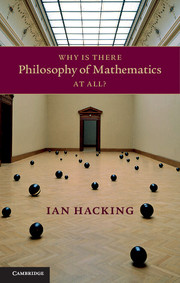Book contents
Chapter 5 - Applications
Published online by Cambridge University Press: 05 June 2014
Summary
Past and present
This chapter continues the contingency theme of Chapter 4. Part A describes the emergence of the very distinction between pure and applied mathematics. The theme of the previous chapter – that we could very well have progressed without proof – can be debated. But there should be general agreement that we need not have divided mathematics into pure and applied. Indeed some decline to do so. Mark Steiner quite sensibly holds that there is mathematics, and there are its applications. Hannes Leitgeb, commenting on my first Descartes Lecture in Tilburg, said that applied mathematics is not mathematics at all, it is just science. As I understand him, the expression ‘pure mathematics’ is a tautology, for all mathematics is ‘pure’. Steiner and Leitgeb have different motivations, but both reject the very concept of applied mathematics as standing alongside pure mathematics. I shall call this the Steiner−Leitgeb attitude to applied mathematics.
Here I take a different tack. I shall distinguish the pure from the applied, but then go on to say that they interact so vigorously that it often requires dogmatism to keep them apart. That will be illustrated by a few examples in Part B, ‘A very wobbly distinction’.
- Type
- Chapter
- Information
- Why Is There Philosophy of Mathematics At All? , pp. 144 - 190Publisher: Cambridge University PressPrint publication year: 2014



